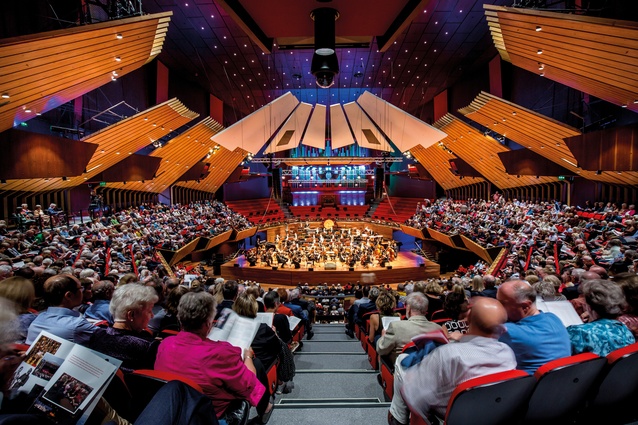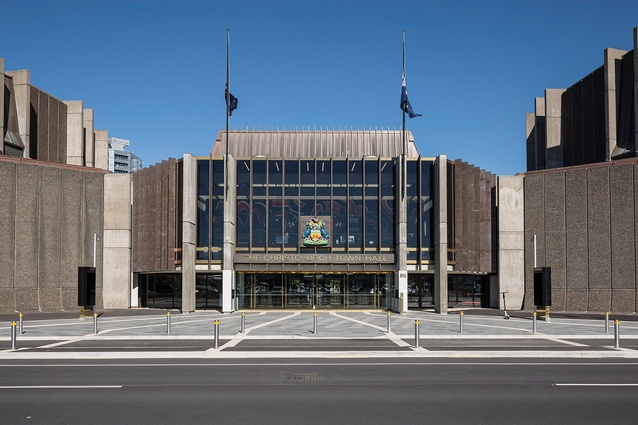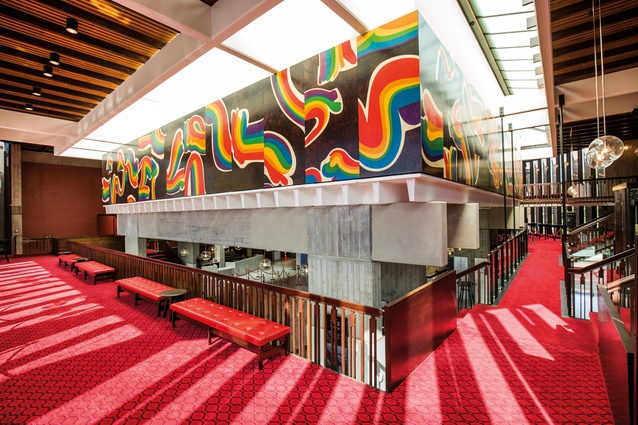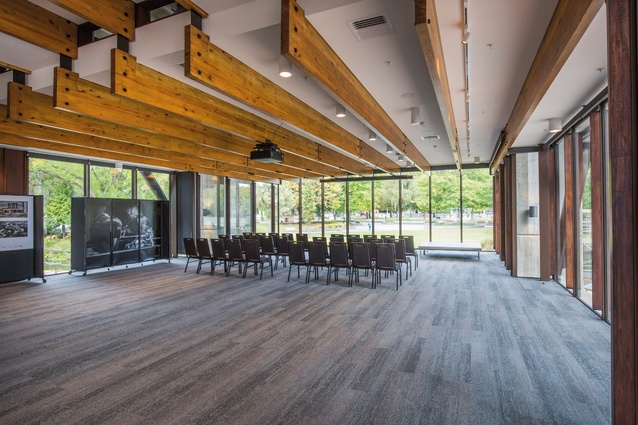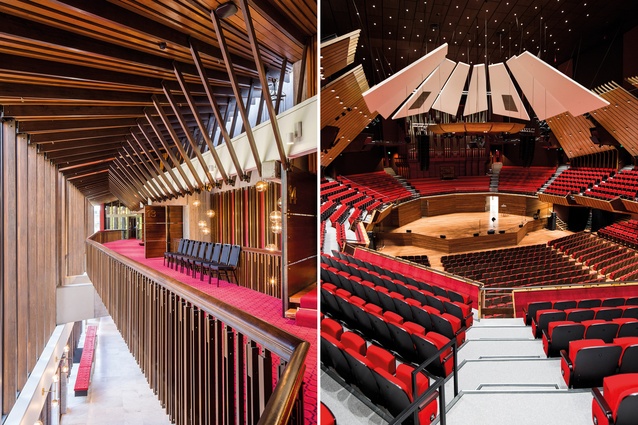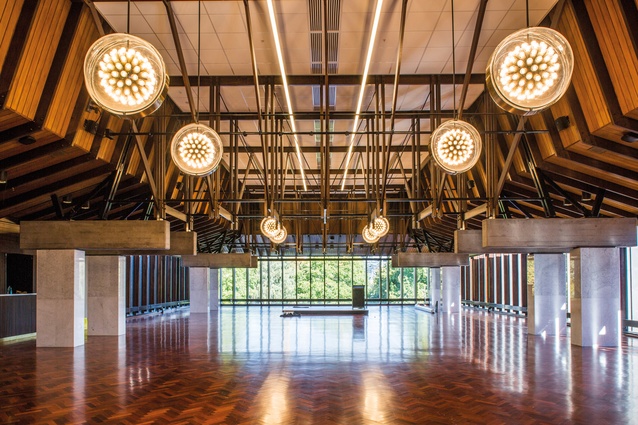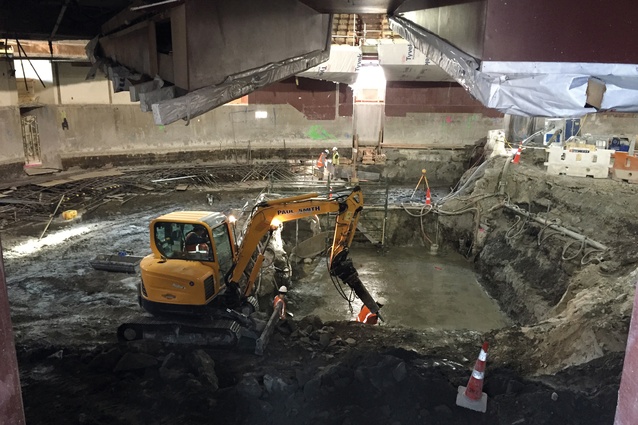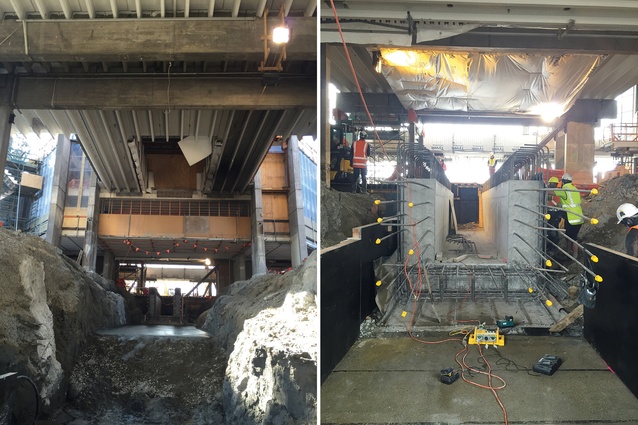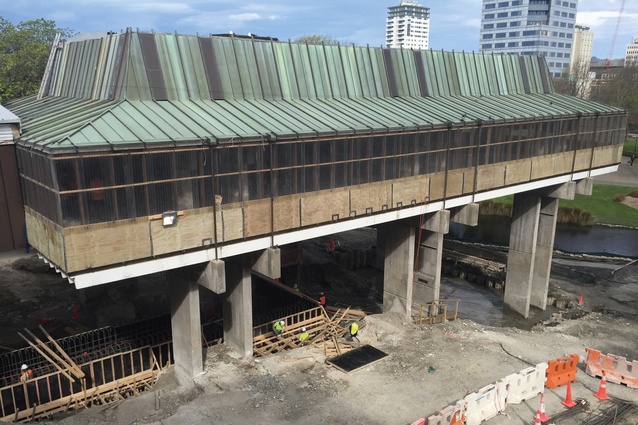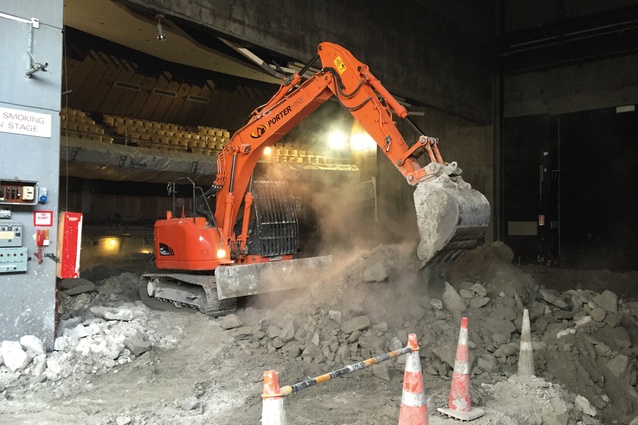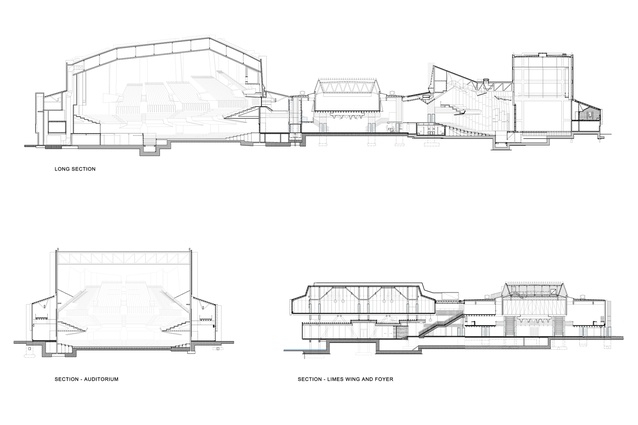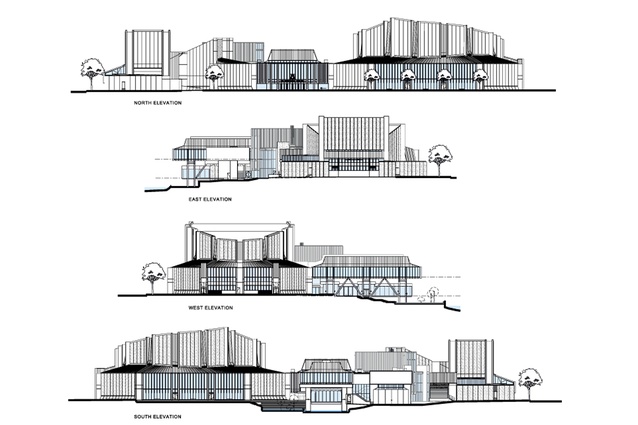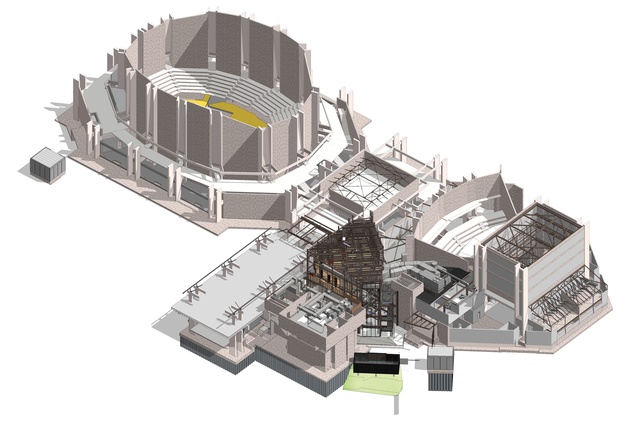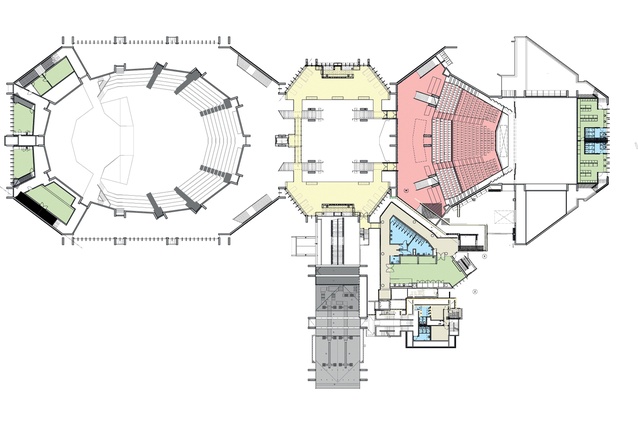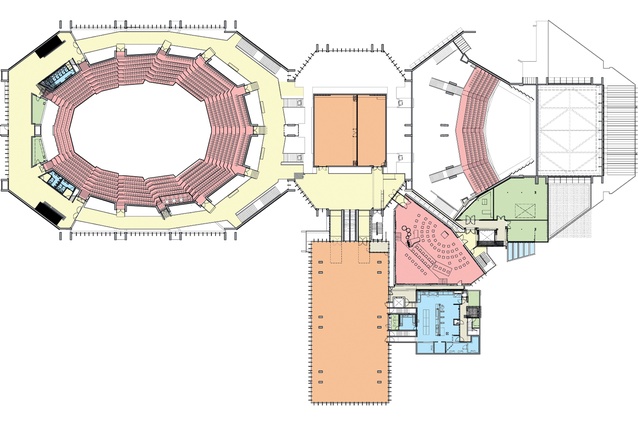Distinguished, with X-ray clarity sound: Christchurch Town Hall
Ian Lochhead celebrates the extraordinary engineering gymnastics employed to renew Warren and Mahoney’s brutalist masterpiece – a restoration that breathes new life into the Christchurch Town Hall while keeping its much-loved heritage intact.
Exactly eight years and one day after the devastating Christchurch earthquake caused severe damage to the Christchurch Town Hall, it was reopened by the city’s mayor, Lianne Dalziel. Assisting her in cutting the ceremonial ribbon were two members of the original design team, Sir Miles Warren and Sir Harold Marshall. Maurice Mahoney, who died on 31 October 2018, was represented by two great-grandsons.
Although this was a low-key event in comparison with the civic celebrations that accompanied the complex’s opening in September 1972, it was, nevertheless, a major milestone in the city’s rebuild. The return of this much-loved, heavily used, architecturally distinguished and acoustically admired venue was marked by three concerts on successive nights from 1 March, with two organ recitals on the recommissioned and augmented Rieger organ the following week. Every event was packed and, during two open days, more than 11,000 people visited the newly repaired, strengthened and restored complex.
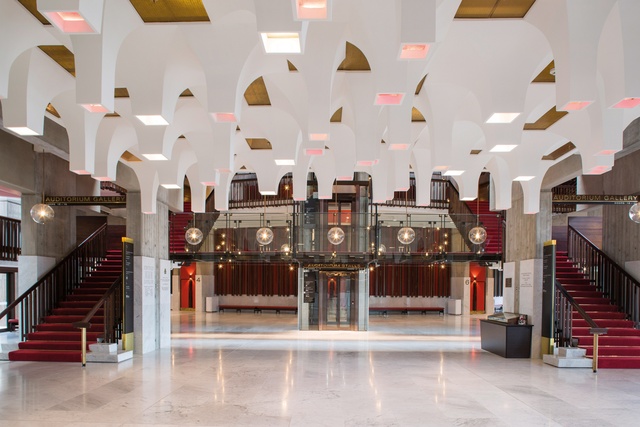
Re-entering the Town Hall, it seemed hard to believe that the restoration of one of New Zealand’s finest buildings of the 20th century was ever in question. However, it is important to record that the building was saved because the city’s people rejected the opinion of the then Minister of Earthquake Recovery, Gerry Brownlee, that it should be demolished and petitioned the Christchurch City Council to retain the building.
The fact that the complex was listed as a Group One heritage item in the district plan was an important argument in its favour but, probably, the key factor was cost. Repair and strengthening to 100 per cent of the current building code was calculated at $127 million, of which around $67 million was covered by insurance. Although the total budget has now reached $167 million, this does include the cost of a new, purpose-built home for the Christchurch Symphony Orchestra and a wide range of upgrades to building services and safety, including a new ground-source heating system, double glazing and fire curtains.
A city council report commissioned from Deloitte in 2015 estimated that a replacement hall, seating 1600 rather than 2600 (the capacity of the existing auditorium), plus a smaller multi-purpose venue, would cost $193 million. The benefits of restoration were inescapable and, as the estimates for strengthening the undamaged Wellington Town Hall escalate to $130 million, the people of Christchurch recognise that their restored Town Hall has been a wise investment.
The threat to the Town Hall was less the structure itself, which had been well engineered by the standards of its time, but rather the instability of the ground on which it stood. Liquefaction occurred across the site but was greatest where it was adjacent to the Avon River, causing the southern side of the building to subside by up to 350mm. The Limes Room, which extended on the north-south axis from the central entrance foyer towards the Avon, sank at its northern end and lifted adjacent to the river.
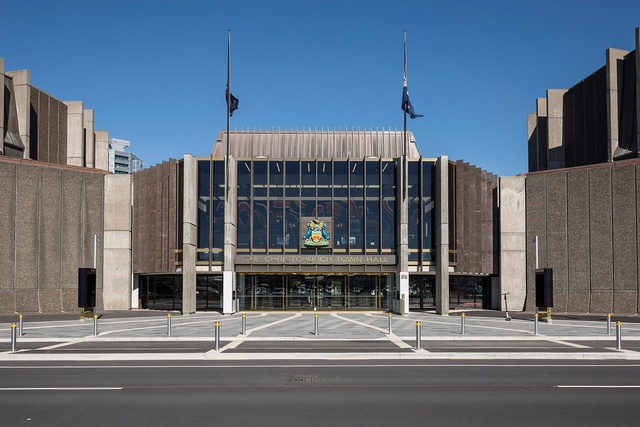
The challenge for both architects and engineers was to find a way in which to stabilise a large site covered by an existing building while increasing the seismic strength of the structure to meet new code requirements, without impacting on the aesthetic and heritage values of the original design. These challenges were exacerbated by the nature of Warren and Mahoney’s original design approach, which made the expression of structure a key feature of the building.
There was almost nowhere to hide the additional structural elements needed to achieve greater seismic strength. These considerations were the drivers of the approach adopted for the strengthening and restoration project by engineers Holmes Consulting and architects Warren and Mahoney.
The first stage involved the insertion of 1098 jet grout piles through the existing floor slab to stabilise the site. The floor was then removed and replaced by a new raft foundation that tied the existing foundations into a new slab that varies in thickness from 700mm to 900mm. The main structure of the building had proved remarkably resilient but, where required, beams were strengthened with FRP (fibre-reinforced polymer) wrap. While this resulted in the loss of the original fair-faced concrete finish, the increase in dimensions is minimal and a plain, plastered finish ensures that the strengthened elements blend with the unaffected sections.
Increasing the strength of the paired concrete columns that are such a feature of the design as a whole required a more invasive approach. The 38 columns that support the Entrance Foyer and Limes Room were progressively replaced with new columns of exactly the same dimensions and finish but they contain more than twice as much reinforcing steel as did the originals. It requires a sharp eye to distinguish new columns from old. As part of this process, the Limes Room was re-levelled and the floor of the former restaurant on the ground floor was reconstructed on a single level to achieve greater flexibility.
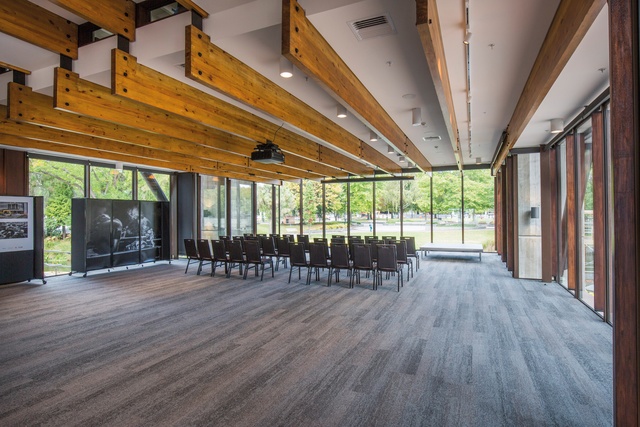
The original level changes created an impression of the building cascading towards the river before it rose in a cantilevered extension over the water. While the loss of this dynamic effect is regrettable, the functional advantages of the new space are undeniable.
The most visually noticeable new element is the series of steel buckling-restrained braces added to the Limes Room wing that was necessary to achieve the desired strength. These introduce a foreign structural language but their impact is diminished by the decision to paint them black and by their small scale relative to the visual weight of the original reinforced concrete columns and beams.
The heart of the Christchurch Town Hall has always been the Douglas Lilburn Auditorium and returning to this remarkable space brought smiles of recognition for many, yet, there was still the pleasurable shock of finding oneself in an enormous space that was, at the same time, warm and intimate. William Alington remarked, when the hall opened in 1972, that it offered a new spatial experience to New Zealanders and, in the intervening years, the auditorium has lost none of its capacity to make entering it a memorable experience.
Very little has changed. Seats have been re-upholstered in a slightly more intense red than they were previously and the floor covering has changed from buff to blue-grey but the essential character of the space is completely intact. As the opening concerts revealed, its famed acoustic is unaffected.
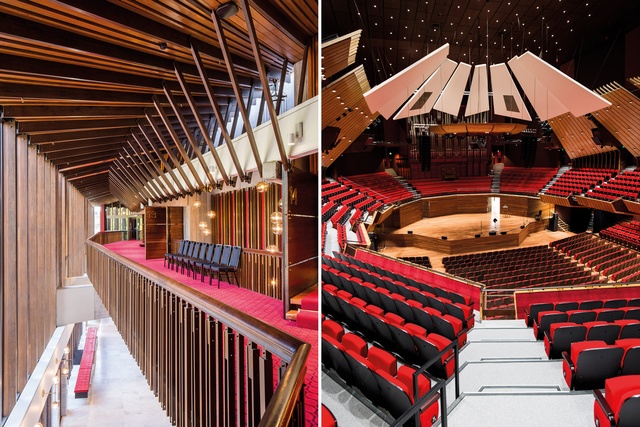
After eight years of audiences listening to music in makeshift venues, the impression of the utmost clarity of sound within the warm and resonant acoustic that the Lilburn auditorium provides brought tears to more than a few eyes. The Christchurch Symphony’s choice of repertoire for their concert on 2 March was inspired; the luminous scoring of Stravinsky’s 1919 Firebird Suite was the perfect vehicle by which to show off the hall’s clarity of sound while the thundering climax of Respighi’s Pines of Rome exploited its resonance to the full.
Almost 50 years on from its opening, there is still limited recognition of the historical significance of this auditorium in the larger history of concert hall design. Harold Marshall’s realisation of the importance of early lateral sound reflections and the newfound ability to use computer modelling to predict the sound quality in individual seats within a room changed the paradigm for concert hall design from that time on.
It was no accident that, when the British acoustician, Trevor Cox, was asked to provide a list of 10 landmark concert halls by The Guardian newspaper in March 2015 for an article coinciding with the opening of the Philharmonie de Paris, the Christchurch Town Hall was on his list. The Paris auditorium, designed by Jean Nouvel in close collaboration with Marshall Day Acoustics, has been described as possibly the most exciting place to listen to classical music anywhere in the world.
In a recent article, the leader of the Orchestre de Paris, Philippe Aïche, described the acoustic of the Philharmonie’s Salle Pierre Boulez as “exceptional! Each instrument is perfectly defined; it is very analytical but, at the same time, the instruments blend perfectly.” Compare this with Leonard Bernstein’s response to the Christchurch Town Hall when he performed there with the New York Philharmonic in 1974: “What is wonderful about it is the warmth of it and the X-ray clarity of the sound”. The path that led to the Philharmonie de Paris had been defined more than 40 years earlier in Christchurch.
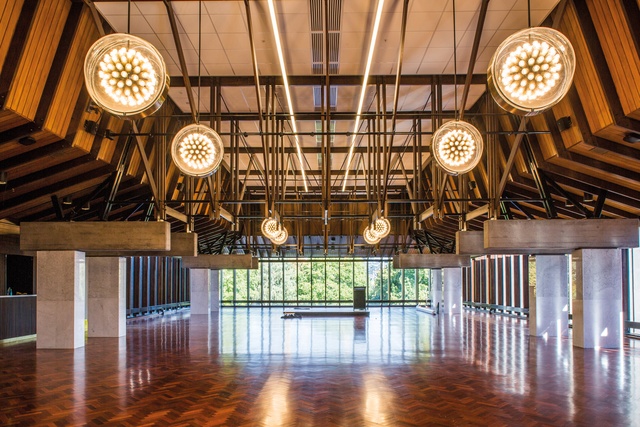
By the time this article appears, the James Hay Theatre will have been completed, with new retractable seating in the front section of its auditorium to allow for greater flexibility of use. By the third quarter of this year, the Christchurch Symphony Orchestra will occupy its new administrative offices and rehearsal hall in the building; these have been skilfully inserted into the space at the intersection of the south elevation of the James Hay Theatre and the east elevation of the Limes Room wing.
The impact of this new structure on the classic views of the original building from Victoria Square is minimal, although new service ducts above the junction between the main foyer and the Limes Room are visually intrusive. The disappearance of the cast iron Victorian lamp stands along the paved river terrace will also be lamented, in spite of the fact that their modern replacements will provide better light, along with security surveillance. These are, however, minor blemishes in what must surely be regarded as the most comprehensive restoration of a major modern-movement building in New Zealand’s history.
Ian Lochhead is the editor of The Christchurch Town Hall – 1965 to 2019: A Dream Renewed, to be published by Canterbury University Press later in 2019. Contributors include: Sir Miles Warren on the original design and construction; Sir Harold Marshall on acoustic design; Peter Marshall on the architectural challenges of the restoration; John Hare on structural repair and seismic strengthening; and Martin Setchell on the Town Hall organ. Lochhead writes about the original design competition, the response to and use of the building, and the campaign to ensure its survival following the 2011 earthquakes.
This article first appeared in Architecture New Zealand magazine.


